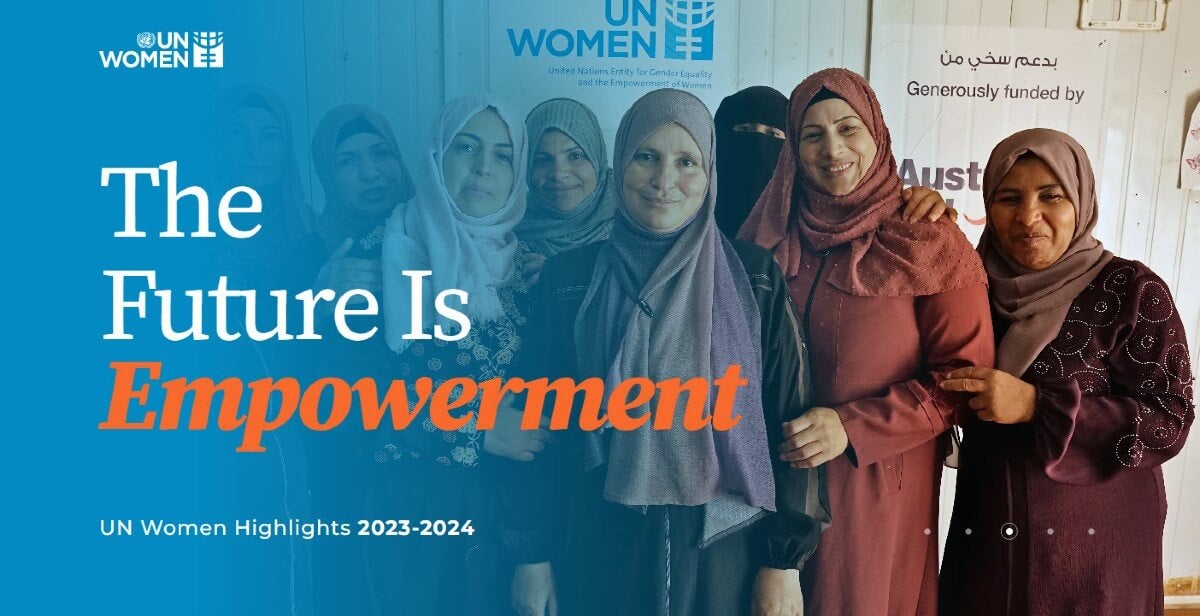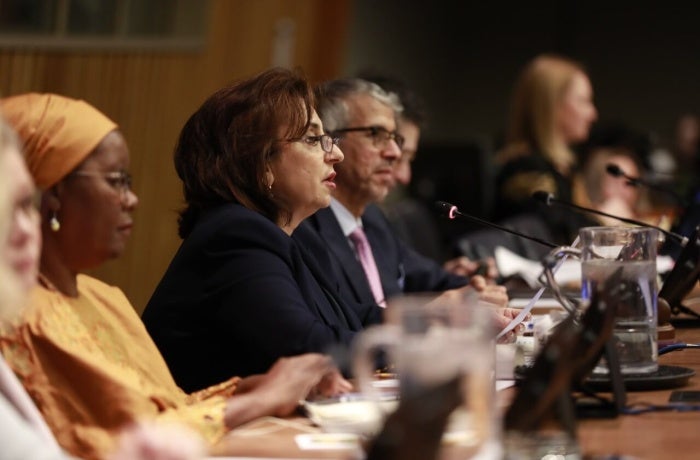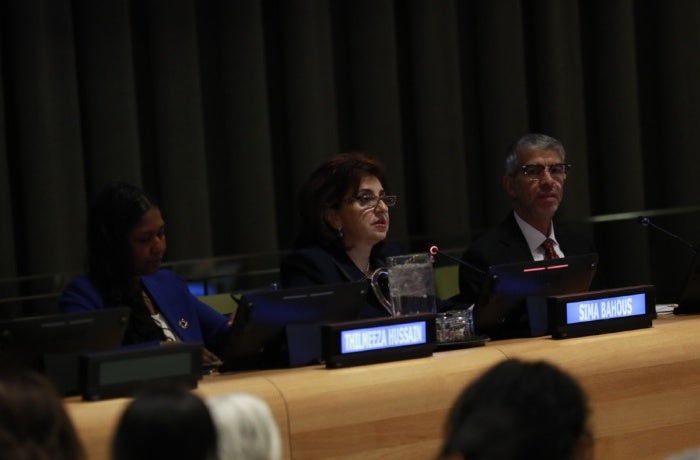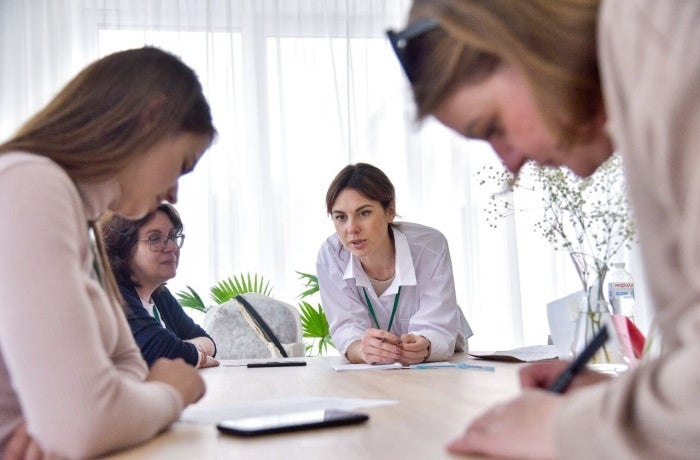Speech: The importance of joint development solutions and quality financing in the face of multiple crises
Statement by Ms Sima Bahous, Executive Director of UN Women to the 2023 Joint Meeting of the Executive Boards of UNICEF, UNDP/UNFPA/UNOPS, WFP, UN WOMEN, 2 June 2023
[As delivered]
The SDGs are off-track, and SDG 5 is no exception. For example, 28 per cent of the SDGs’ gender indicators are very far from their 2030 targets. We are only on track to possibly meet one target, which is that of women’s participation in local governments. While we celebrate that, and we should, we need to continue to look at how we can best accelerate all the targets.
At the same time, gender equality offers our best hope to bring all the SDGs back on track. It is both a prerequisite and catalyst for progress across the goals.
That is why this question of how we can work together is so crucial and so important at this time—because we must put gender equality at the heart of our joint solutions. And we also must put quality and innovation at the heart of our joint solutions.
At this halfway point of the 2030 Agenda we also must revitalize our commitments, accelerate our efforts and capacities and continuously strengthen our institutions and infrastructure—all to support Member States in your efforts to achieve your national development priorities and Agenda 2030. I would like to stress here, as my colleague Achim Steiner also stressed, that it is so important that everything is centred to the national priorities and the agendas of the countries to 2030, and this is where we will achieve the most success.
As a core part of our triple mandate as UN Women, we are effectively working on this across the UN system and through Strategic Partnerships as well. There are many aspects of this, but I will focus on only two of them.
First, we need more real joint programmes, genuine shared endeavours that are ambitious and also transformative. And which have clear and measurable goals that allow us to truly judge our collective successes and also our collective failures.
These joint programmes must bring together the key stakeholders for SDG 5, including government, civil society, public institutions including the IFIs, the private sector and the United Nations, to work in harmony to generate accelerated impact at the pace and scale that we so desperately need.
In UN Women, we are modelling this approach. For example, together with UN sister agencies, governments and civil society partners, we and ILO are promoting decent employment for women and investments in the care economy, an area where we need accelerated joint action. This is being rolled out in five-countries - Argentina, Egypt, Ethiopia, Morocco and Nepal. The programme has generated policy tools that have enabled an additional 21 UN Country Teams to support their governments to integrate gender data and analysis into macroeconomic policy and to address unpaid care through policy design.
In Ethiopia, the joint programme has contributed to the development of a National Policy on Gender Equality and Women’s Empowerment and findings of the programme are informing the national gender and care strategies.
We are also pleased that at UN Women almost one third of our programming budget is in joint programmes, one of the highest in the system, and I am determined that we will go higher.
Second, we must make sure that the commitments we make are backed up by real and substantial resource allocation. The readiness to allocate resources to us is a litmus test of how credible our rhetoric on gender equality genuinely is.
Tools like the OECD-DAC gender marker, gender bonds, ongoing efforts across the IFIs and other finance institutions, as well as efforts to strengthen gender-responsive budgeting at national level, have actually advanced this agenda. They are important and must be more widespread and further strengthened and solidified.
At the level of the United Nations, the Systemwide Action Plan performance indicators show us that the number of UN entities tracking financial allocations and expenditures on gender equality and women’s empowerment through the Gender Equality Marker is growing. They are now at 28 out of 68 entities (in which the use of financial tracking is applicable), up by 10 over the last decade. We can celebrate that while also encouraging those parts of the system that have not yet been able to join this group to do so.
And finally, by publicly sharing data on the investments, we make we can also encourage a race to the top across the range of partners for SDG 5, with each of us putting the maximum resources on the table for our collective efforts.
I thank you.









